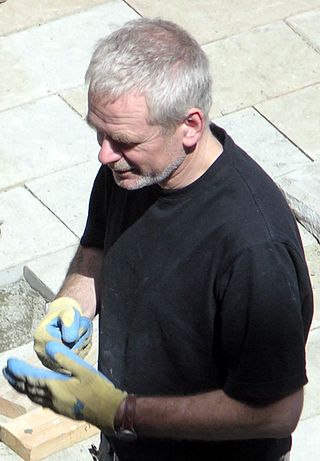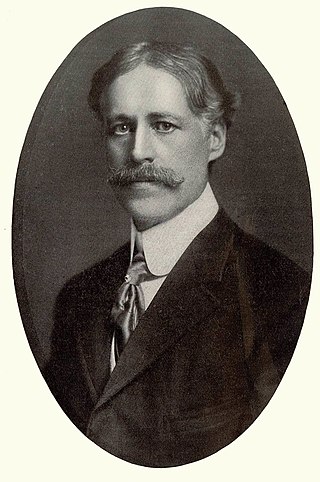External links
- G. Augustine Lynas
- Lynas's new publishing company, offering his new book The ABCs of Central Park and The ABCs of Brooklyn"
G. Augustine Lynas is a sculptor of sand sculptures and other ephemeral materials, including snow. He also works in concrete, ceramic, bronze and most two-dimensional media (including murals, illustration, photography, etc.).
Lynas has been doing public sculptures since about 1956. He usually creates his sand sculptures spontaneously to be recycled by the tide, which encourages emotional attachment by the on-lookers to the disappearing art. When crowds form around his work, he uses the opportunity to remind his audience of the delicate ecology of the oceans and seashores. His works are usually representational, and often combine anatomical forms with architecture and landscape. Some pieces are enormous, some small. A few are dry and in low relief, while others are tall and highly detailed. Some employ optical illusions or gravity defying undercuts. His book and film, both titled "Sandsong", have been available through his website of the same name. Lynas has also created a sculpted concrete sand pit in Manhattan's Riverside Park, where the sand and its container are similar in color and texture so that children can create sand sculptures which appear to alter the concrete sculptures. Lynas also works in other ephemeral materials, including snow. In 1980 he was invited to build snow sculpture in the athlete's village during the Winter Olympics in Lake Placid, New York. More recently he has built concrete and bronze sculptures in seven New York City parks and playgrounds. They include Central Park, Marine Park, Riverside Park, McCarren Park and others. After a few years as a book designer for a major publisher Lynas has worked in New York City as a freelance designer/illustrator/photographer since 1970. He has published 6 books including: "The ABC's of Central Park, an Alphabet Guidebook", The ABCs of Riverside Park" and an interactive e-book called "Tammy & Blue" available through LynasPress.com. He also published "The ABCs of Brooklyn, An Alphabet Guidebook For All Ages" with photographer Peter Vadnai. Lynas is also a pioneer in the world of flying discs and was recently inducted into the Frisbee Freestyle Hall of Fame. He is the father of three, lives with his wife in Manhattan.

Daniel Chester French was an American sculptor in the late 19th and early 20th centuries. His works include The Minute Man, an 1874 statue in Concord, Massachusetts, and his 1920 monumental statue of Abraham Lincoln at the Lincoln Memorial in Washington, D.C.

Andy Goldsworthy is an English sculptor, photographer, and environmentalist who produces site-specific sculptures and land art situated in natural and urban settings.
Adolph Alexander Weinman was a German-born American sculptor and architectural sculptor.

William Ordway Partridge was an American sculptor, teacher and author. Among his best-known works are the Shakespeare Monument in Chicago, the equestrian statue of General Grant in Brooklyn, the Pietà at St. Patrick's Cathedral in Manhattan, and the Pocahontas statue in Jamestown, Virginia.

John Quincy Adams Ward was an American sculptor, whose most familiar work is his larger than life-size standing statue of George Washington on the steps of Federal Hall National Memorial in New York City.

Joe Mangrum is an installation and multiple-medium artist who is particularly known for his large-scale colored sand paintings. He resides in New York City. Using a wide spectrum of components, his work often includes organic materials, such as flowers, food and sand, in addition to deconstructed computer parts, auto-parts and a multitude of found and collected objects. His installations often include mandala-like forms, pyramids, maps, grids and mushroom clouds and the Ouroboros.

Milton Horn was a Ukrainian American sculptor and artist known for work that, according to a 1957 citation of honor from the American Institute of Architects, demonstrated "the truth that architecture and sculpture are not two separate arts but, in the hands of sympathetic collaborators, one and the same".

Chaim Gross was an American sculptor and educator of Hungarian Jewish origin. Gross studied and taught at the Educational Alliance Art School in New York City’s Lower Manhattan. He summered for many years in Provincetown.

Attilio Piccirilli was an American sculptor. Born in Massa, Italy, he was educated at the Accademia di San Luca of Rome.
Daniel Colen is an American artist based in New York. His work consists of painted sculptures appropriating low-cultural ephemera, graffiti-inspired paintings of text executed in paint, and installations.

Conservatory Water is a pond located in a natural hollow within Central Park in Manhattan, New York City. It is located west of Fifth Avenue, centered opposite East 74th Street. The pond is surrounded by several landscaped hills, including Pilgrim Hill dotted by groves of Yoshino cherry trees and Pug Hill. These plantings were intended to match the flora around the mansions that once lined the adjacent stretch of Fifth Avenue.

Gamaliel King was an American architect who practiced in New York City and the adjacent city of Brooklyn, where he was a major figure in Brooklyn civic and ecclesiastical architecture for several decades.

Richard Shilling is a British artist and photographer working in the field of land art and sculpture in the North West of England. He is currently artist in residence at The Middlewood Trust, Roeburndale. Shilling is known for his ephemeral and changing art works made from natural materials in natural settings outdoors. He is self-taught and works intuitively, hoping to become more familiar with and absorbed in the landscape.
Danny Flynn, is a D&AD award-winning designer and printer, specialising in limited edition book design and illustration, and letterpress and screen-printing. His work in design, typography and printing led to him working in post-production design for the opening title sequence of the Hollywood film Gladiator.
The Waterpod was a community-based public art project in New York City in 2009. Open to the public, an ecosystem on a barge called the Waterpod visited the five boroughs at eight different piers for two weeks at a time during the summer of 2009, hosting a series of events. It was designed as a futuristic habitat and an experimental platform for assessing the design and efficacy of autonomous marine living systems in preparation for an assumed future. A multinational team including artists, designers, marine engineers, and civic activists led by the artist Mary Mattingly alongside the New York City Office of the Mayor Special Projects, the United States Coast Guard, and the New York City SBS Dockmaster Unit, this was a cross-disciplinary project that took place in the waterways of New York City in 2009.

Minimalism describes movements in various forms of art and design, especially Visual art and music, where the work is set out to expose the essence, essentials or identity of a subject through eliminating all non-essential forms, features or concepts. As a specific movement in the arts it is identified with developments in post–World War II Western Art, most strongly with American visual arts in the 1960s and early 1970s. Minimalism is often interpreted as a reaction to abstract expressionism and a bridge to postminimal art practices. Prominent artists associated with this movement include Ad Reinhardt, Nassos Daphnis, Tony Smith, Donald Judd, John McCracken, Agnes Martin, Dan Flavin, Robert Morris, Larry Bell, Anne Truitt, Yves Klein and Frank Stella. Artists themselves have sometimes reacted against the label due to the negative implication of the work being simplistic.

Walk Like a River is a public sculpture by Peter Flanary located at Riverside Park on the east side of Milwaukee, Wisconsin. Walk Like a River consists of three sculptures--Drop,Gather, and Flow--installed throughout the park. The group of sculptures was commissioned by the Urban Ecology Center, a nonprofit organization.
William George Mitchell was an English sculptor, artist and designer. He is best known for his large scale concrete murals and public works of art from the 1960s and 1970s. His work is often of an abstract or stylised nature with its roots in the traditions of craft and "buildability". His use of heavily modelled surfaces created a distinctive language for his predominantly concrete and glass reinforced concrete (GRC) sculptures. After long years of neglect, many of William Mitchell's remaining works in the United Kingdom are now being recognised for their artistic merit and contemporary historic value, and have been granted protective, listed status.

The bust of Edward Snowden, called Prison Ship Martyrs' Monument 2.0 by its creators, was an ephemeral, illegally installed public sculpture of Edward Snowden, an American whistleblower who leaked classified information from the National Security Agency (NSA) and was charged with federal crimes as a result. The bronze-like bust was placed in Fort Greene Park in Fort Greene, Brooklyn, New York City, on April 6, 2015. This sparked outrage by the Society of Old Brooklynites. It was attached to a Doric column on the perimeter of the park's Prison Ship Martyrs' Monument, a memorial and crypt which honors and inters the more than 11,500 American prisoners of war who died in the American Revolution while housed on British prison ships.

James Reuel Smith (1852–1935) was an American photographer and amateur historian who worked in the late 19th century to early 20th century. He was known for his documentary photographs of historical springs and wells in New York City before they were buried beneath the concrete of the rapidly growing city. Many of these natural water resources disappeared as the New York municipal water system developed.